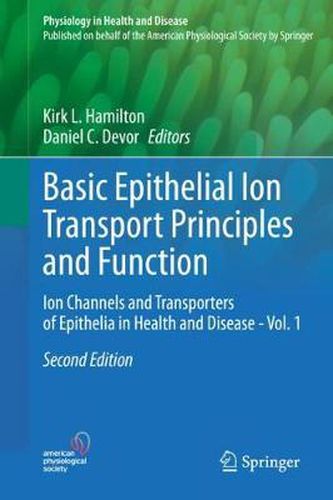Readings Newsletter
Become a Readings Member to make your shopping experience even easier.
Sign in or sign up for free!
You’re not far away from qualifying for FREE standard shipping within Australia
You’ve qualified for FREE standard shipping within Australia
The cart is loading…






This title is printed to order. This book may have been self-published. If so, we cannot guarantee the quality of the content. In the main most books will have gone through the editing process however some may not. We therefore suggest that you be aware of this before ordering this book. If in doubt check either the author or publisher’s details as we are unable to accept any returns unless they are faulty. Please contact us if you have any questions.
This book discusses unique ion channels and transporters that are located within epithelial tissues of various organs including the kidney, intestine, pancreas and respiratory tract. As the authors show, these channels and transporters play crucial roles in transepithelial ion and fluid transport across epithelia and their contribution to maintaining homeostasis. Readers will be introduced to the fundamentals of ion transport in terms of function, modelling, regulation, structure and pharmacology. This is the first of three volumes highlighting the importance of epithelial ion channels and transporters in basic physiology and pathophysiology of human diseases.
This volume focuses on basic fundamentals of epithelial transport physiology. There is a range of chapters dedicated to specific aspects of epithelial ion transport and cell function. Accordingly, the authors discuss techniques used to determine epithelial function, principles of epithelia transport, polarization of epithelial cells, mathematical modelling of epithelial ion transport, protein folding of ion channels, degradation epithelial ion channels, fundamentals of epithelial sodium, potassium and chloride transport, fundamentals of bicarbonate secretion, volume regulation, and microRNA regulation of epithelial channels and transporters. Given its scope, Volume 1 offers a valuable resource for physiology students, scientists and clinicians alike.
$9.00 standard shipping within Australia
FREE standard shipping within Australia for orders over $100.00
Express & International shipping calculated at checkout
This title is printed to order. This book may have been self-published. If so, we cannot guarantee the quality of the content. In the main most books will have gone through the editing process however some may not. We therefore suggest that you be aware of this before ordering this book. If in doubt check either the author or publisher’s details as we are unable to accept any returns unless they are faulty. Please contact us if you have any questions.
This book discusses unique ion channels and transporters that are located within epithelial tissues of various organs including the kidney, intestine, pancreas and respiratory tract. As the authors show, these channels and transporters play crucial roles in transepithelial ion and fluid transport across epithelia and their contribution to maintaining homeostasis. Readers will be introduced to the fundamentals of ion transport in terms of function, modelling, regulation, structure and pharmacology. This is the first of three volumes highlighting the importance of epithelial ion channels and transporters in basic physiology and pathophysiology of human diseases.
This volume focuses on basic fundamentals of epithelial transport physiology. There is a range of chapters dedicated to specific aspects of epithelial ion transport and cell function. Accordingly, the authors discuss techniques used to determine epithelial function, principles of epithelia transport, polarization of epithelial cells, mathematical modelling of epithelial ion transport, protein folding of ion channels, degradation epithelial ion channels, fundamentals of epithelial sodium, potassium and chloride transport, fundamentals of bicarbonate secretion, volume regulation, and microRNA regulation of epithelial channels and transporters. Given its scope, Volume 1 offers a valuable resource for physiology students, scientists and clinicians alike.